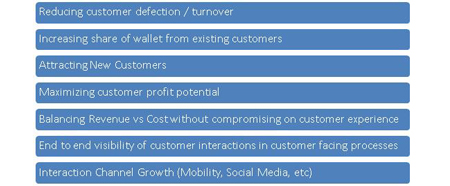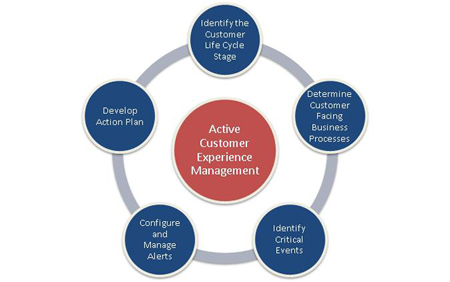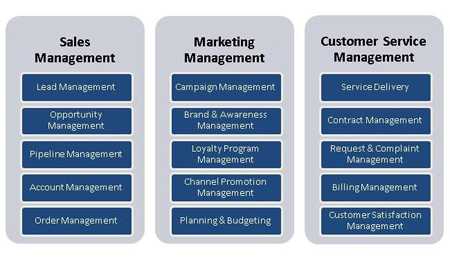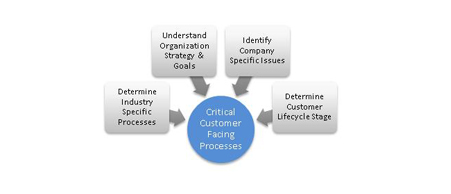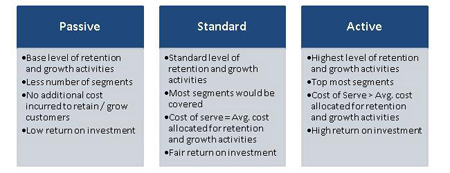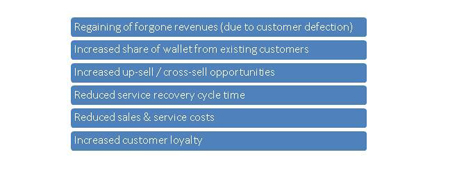So You Want To Keep Your Customers? Here's How Business Process Management (BPM) Can Help
Add bookmark
Customer Experience can be defined as sum of all interactions and experiences that a customer has with a company, writes contributor Rohan Bhattacharjee. Want to improve your customers’ experience with your company? Here is how "value-based" BPM can help.
Customers are always interacting with your organization - and not only during the actual ‘buying’ process. They are interacting with your company when they visit your website, for instance, call your telephone helplines(contact center), visit one of your retail outlets, use a self service kiosk, use your product, respond to your email promotions – and the list can go on. Each one of these interactions are "moments of truth" where a customer forms their perceptions about your company, your business practices, service quality, etc.
Customer Experience can be defined as sum of all these interactions and experiences that a customer has throughout their "relationship" with a company. Each of those interactions are critical because they define how a customer perceives their interactions with a company and that ‘perception’ will determine how long a customer stays with an existing provider / supplier.
So if you want to keep your existing customers and attract new ones, it pays to improve the customer experience. Here are some of the key challeneges faced by companies (including Retail, Telecom, Financial Services, and Energy):
Active Customer Experience Management
Active Customer Experience Management refers to the method of proactively managing the customer experience by identifying the most important business processes in a customer life cycle, developing alerts against most important events and then creating an action plan for pro-active and re-active contact with the customer. This helps in managing the customer facing business processes effectively, thus leading to improved overall customer experience.
The below figure shows the key elements of Active Customer Experience Management:
Step 1: Identify the Customer Lifecycle Stage.
The customer lifecycle consists of several stages right from the first time the customer is reached as a lead till the time he stops being a customer anymore. It may also be the case that the customer never leaves the company and instead becomes a strong advocate of the products and services, thus helping to bring in more customers. The typical customer life cycle stages are - Reach, Acquire, Develop, Retain, and Inspire. It is extremely useful to be able to classify and group customers into each of these stages as the needs and expectations of the customers are very different at each stage. Thus, the customer facing business processes that are deemed to be most important by customers also vary depending on which stage of the lifecycle they are in.
Step 2: Determine the Customer Facing Business Processes.
Customer Facing Business Processes are essentially those processes that may or may not require a direct contact with the customer, but the customer is definitely impacted by these processes. These processes are bound to vary for different industries and in turn for different companies. They include the building of a single view of the customer across all contact channels and the distribution of customer intelligence to all customer-facing functions like Sales, Marketing, and Customer Service.
Business Process Management can help in developing a systematic structure to manage customer relationship initiation, maintenance, and termination; across all customer contact points to maximize the value of the relationship portfolio.
The figure shows a sample structure for Customer Facing Business Processes:
BPM can help identify the most critical customer facing business processes for an organization by careful analysis of the industry, company and customer segments. Depending on the Customer Life Cycle stage, the criticality and importance of the business processes are bound to vary.
Step 3: Identify Key Events for Customer Facing Processes.
The critical customer facing business processes are analyzed to identify the key events that affect the customer. Active Customer Experience Management provides the ability to use customer insights, to proactively relate to an organization’s targeted customer segments, as well as provide advice and assistance around a number of key events, that can influence the customer’s experience and opinion about the organization, in the customer’s lifecycle.
Events can be classified in two major categories: Events for proactive contact (Retention, Up/Cross-Sell, Risk Mitigation), and Events for reactive contact (Service Recovery, Growth).
BPM takes the lead in providing the insight into these critical customer processes that allows a company to turn potentially difficult events in a customer’s lifecycle into a positive customer experiences. Identifying the key events and charting out an action plan are the key to improving the customer experience.
For instance, a large Australian Energy and Utilities retailer utilized BPM to gather customer insights to manage some key events in their customer facing processes. They found out that about 80% of their customers shifted to a different service provider at the end of their lease period. As part of their account management process, they gathered data from all existing and new customers pertaining to their lease agreement. They configured a ‘Transfer Out’ event alert, so that a message from the distributor telling the company that a "transfer" out is due for the customer, acts as a trigger to pro-actively contact the customer that is moving out, in order to retain them as a customer in their future address.
Step 4: Configure and Manage Alerts.
Alerts need to be developed for all the key events to help identify that an event has taken place. Alerts also help to identify and take appropriate action associated with that particular event in the customer life cycle. Each ‘alert’ needs to have a few characteristics as detailed below:
|
Alert Characteristic |
Definition |
|
Source |
This is the source of the alert. It could either be a data source generated from system, or it could also be a process source as identified from a process. |
|
Threshold |
An alert is generated for proactive contact when a tolerance level is broken. This tolerance level would be the threshold. |
|
Impact |
Every alert can have an allocated impact with respect to the customer experience category it’s trying to influence. They could be Retention and Service Delivery, Risk Mitigation, or Growth. |
|
Customer Type |
Customer Life Cycle stage and associated Customer Segment would help identify the type of pro-active action to be taken. |
|
Priority |
Every alert will have a priority assigned to get actioned out, along with a validity period for the same. |
|
Possible Action |
Every alert would have a possible list of activities that a company would carry out. These would be in co-relation to the impact of the alert and to the customer life cycle stage as well as a customer segment tagging. |
Step 5: Develop A Customer Action Plan.
A detailed action plan needs to be developed against each ‘alert’ identified for improving the customer experience. With the help of active business rules as specified in BPM, these actions can be configured so that they are initiated as and when an alert is triggered.
As there is a substantial cost associated with Active Customer Experience Management, it is important to avoid the risk of ‘over-serve’ to low potential customers and ‘under-serve’ to high valued customers.
Considerations while developing the Customer Action Plan are –
• Type of Customer.
• Stage in customer life cycle.
• Customer segment.
Based on the above, organizations can decide on their action plan with typically three levels of service categories as described below:
Business Benefits
Typical business benefits include:
Active Customer Experience Management driven by BPM can have direct impact on the customer lifetime value, thus impacting both the top line and bottom line of any organization.

